Basic Investment Concepts.
Business cannot run long if the investment returns are any less than the cost of capital. If we consider the long term avg. Cost of capital is approximate 12 % your business return must be much higher
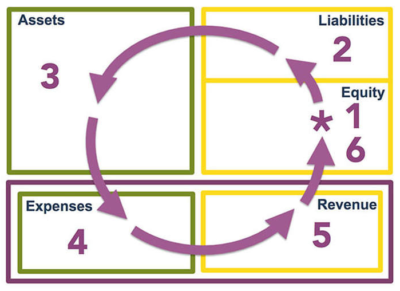
- The Business raises funds from its shareholders.
- it leverages those funds with debts
- with those funds it acquires assets for revenue generation
- it then sacrifices some of those asset values in order to….
- generate value
- the net value generated or consumed is attributed to shareholders as profit or loss.
INFLATION → EROSION OF VALUE OF CURRENCY → INCREASE IN PRICE OF ASSET
POPULATION GROWTH → ECONOMY GROWTH → SALES GROWTH → PROFIT GROWTH
Investing in a single stock may be a good idea if the said company is doing well. However, there’s an enormous risk of losing out on all the money if the company fails to perform. Holding on to one stock can make you vulnerable to various factors that could send the stock on a downward spiral. This may include a weak economy, an industry slump, a sudden change in company management or a disappointing financial performance. Under unfavourable conditions, your sole stock pick might lose its value quickly, implying your investment too loses its value as rapidly.
Diversification is all about reducing the risk. Rather than holding onto one stock and hoping for its steady appreciation, professional investors diversify their portfolios to minimize the risk exposure to any one stock. If one stock in the portfolio declines in value, another stock balances the slack. Opinions vary about the right number of stocks to hold in one’s portfolio. The idea is, that each stock is unique in its volatility. But a group of stocks, if selected properly, are less vulnerable to extreme highs and lows

Passive investments are based on different types of indexes like large cap, mid cap, small cap or thematic, whereas active investments are based on discretionary management of fund manager. Factor investment or smart beta is like index investments added with a unique strategy like equal weight or high weight on deep value, high growth etc.
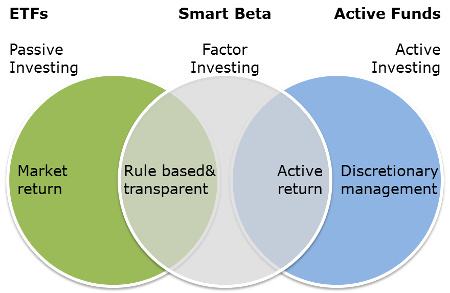
- Equity: Equity or single stock has potential to give a very high return (CAGR), but at the same time difficult to spot the winner, moreover it has the potential to completely erode the capital.
- Index: An Index is a passive investment style, in the long run, all historical data suggest that a very steady return (CAGR ) and absolutely no chance of capital erosion. Further different market cap index has shown different returns with attached volatility.
- MF Schemes: The Mutual Fund schemes actively managed by professionals have mostly given positive returns over and above the Index returns.
Most of the time, investors are baffled by the different types of returns that experts toss at them. Without really understanding these concepts, it will be akin to comparing apples and oranges OR chalk and cheese.
- CAGR: The compound annual growth rate (CAGR) can be interpreted as the growth rate that gets you from the initial investment value to the final investment value if you assume the investment to compound over the time period.
Formula: CAGR = (EV / BV) ^ (1 / n-1) – 1
where:
EV = Investment’s final value
BV = Investment’s initial value
n = Number of periods (months, years, etc.)
- IRR: IRR, known as the Internal Rate of Return states that if the return on a project or an investment is greater than the minimum required rate of return, typically the cost of capital, then the project or investment should be pursued. Conversely, if the IRR on a project or investment is lower than the cost of capital, then the project better be rejected.
Formula: 0 = P0 + P1/ (1+IRR) + P2/ (1+IRR)^2 + P3/ (1+IRR)^3 + . . . +Pn/ (1+IRR)^n
where P0, P1, . . ., Pn equals the cash flows in periods 1, 2, . . . n, respectively; and
IRR equals the project’s internal rate of return.
- XIRR: XIRR is the abbreviation of Extended Internal Rate of Return and is used to find the Return from investments done at different time periods.
Unlike CAGR, XIRR doesn’t have a stated formula; we need to use excel to calculate it.
XIRR formula in excel: XIRR (value, dates, guess)
Values are the transaction amounts, dates are the transaction dates, and guess is the approximate return.
- ROLLING RETURN: Rolling returns are annualized average returns for a period, ending with the listed year. Rolling returns are useful for examining the behavior of returns for holding periods, similar to those actually experienced by investors. Rolling returns are also known as ‘rolling period returns’ or ‘rolling time periods’
While the price of junk bonds typically follows economic conditions, just like stocks; the price of investment quality bonds is usually linked to interest rates. In fact, there is an inverse correlation between interest rates and bond prices which can be explained using two rules of thumb:
With a rise in interest rates, the price of a bond falls.
With a fall in interest rates, the price of a bond rises.

Asset allocation is an investment strategy aimed at balancing the risks and rewards of various asset classes by allocating them to a portfolio according to an individual’s goals, risk tolerance and investment horizon. These asset classes have different levels of risk and return, so each will behave differently over time.
Higher allocation to high yield assets like equity makes the overall portfolio healthier, whereas most of the investors do have a higher allocation to a low yielding asset like fixed income and real estates.

Leveraging simply means borrowing more against your asset/equity, to be deployed in wealth-creating activity. However, this is a double-edged sword, if the resultant return is more than the interest paid on borrowing, works well, if not, it may serve to deplete your asset/equity.
Here is an example with the extension of leveraging.

..
Inflation is defined as an increase in the general price levels for goods and services in a country, measured as an annual percentage change. Under conditions of inflation, the prices of things rise over time. During inflation, you’re able to buy lesser with the same amount of money you were spending earlier. Thus, when an economy experiences inflation, prices rise and the value of money falls.
Inflation and interest rates have always a positive correlation.
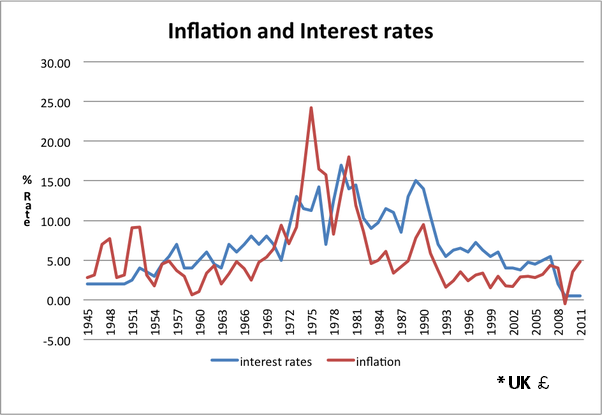
How Mutual Funds Work ?
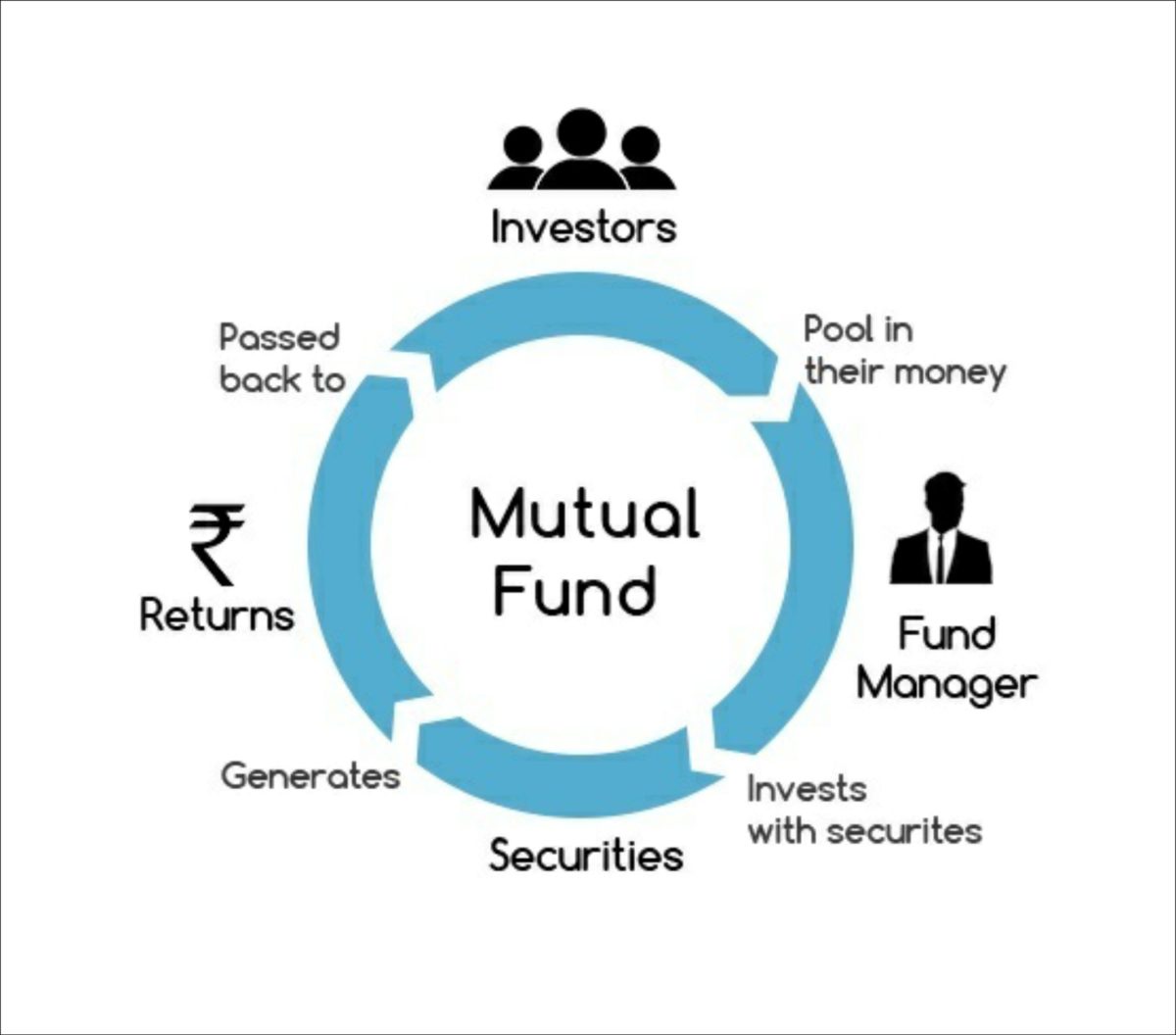
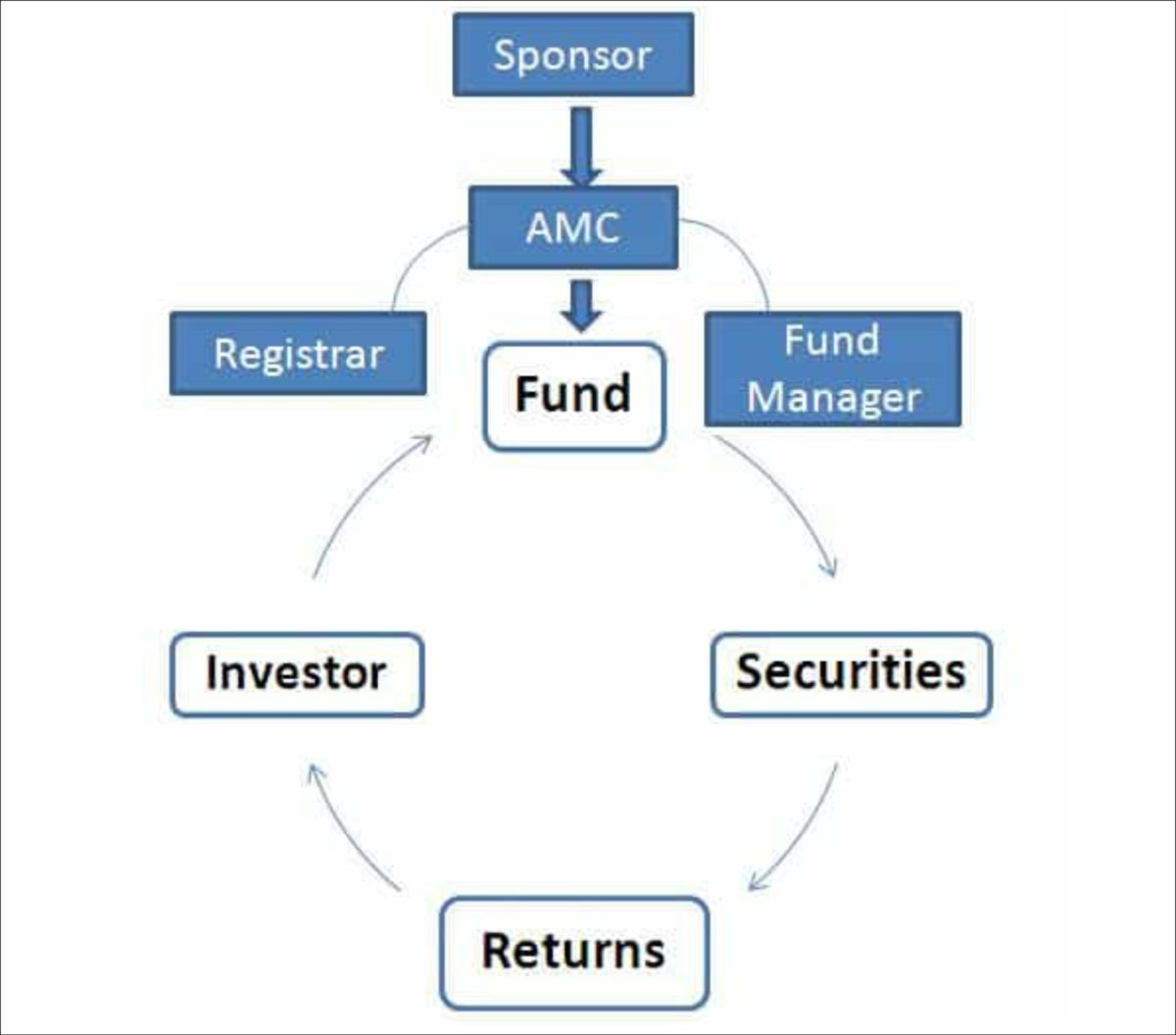
Types of Mutual Funds
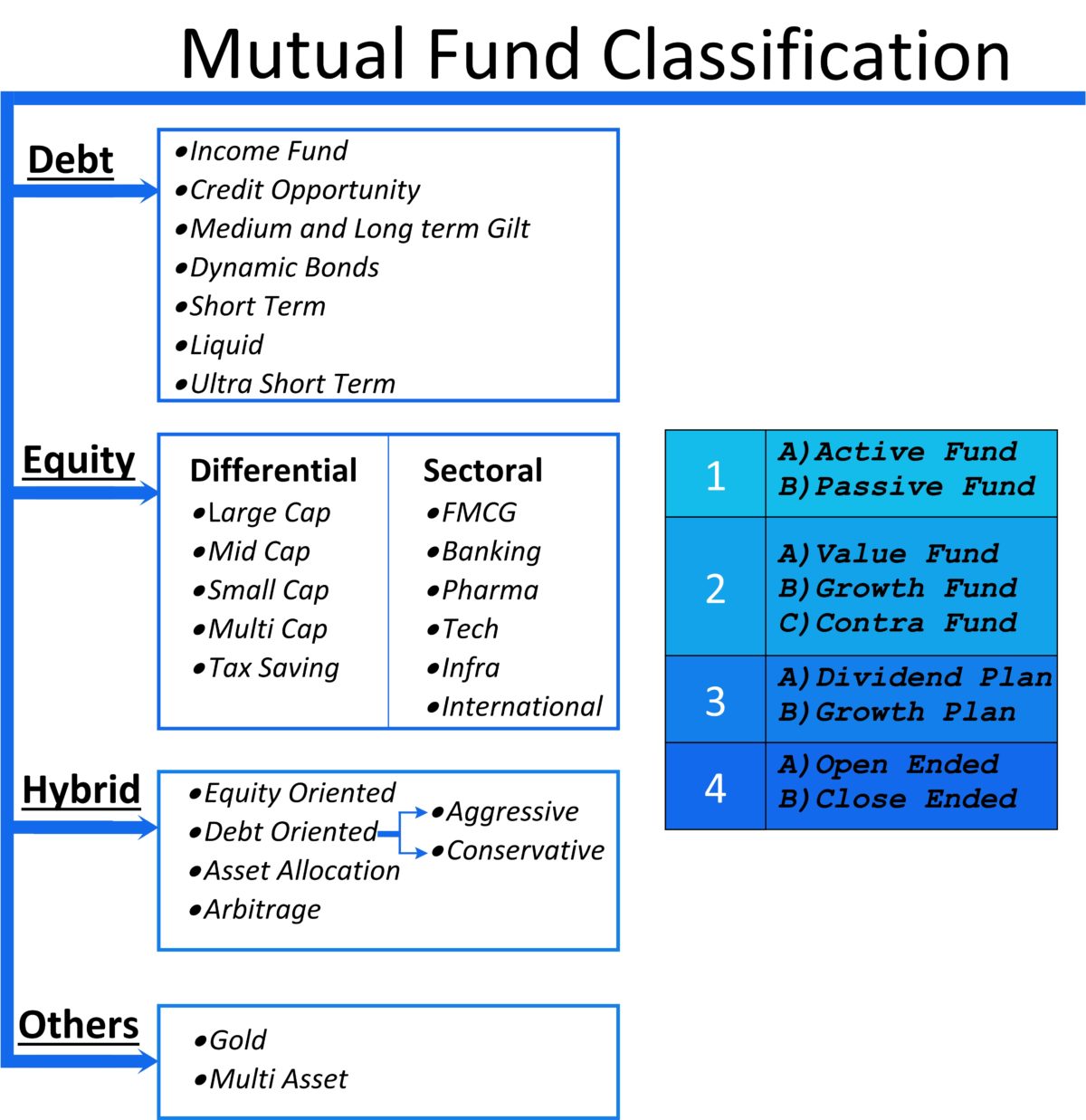
- Income: Funds having an average maturity of 4.5 years or more
- Gilt (medium & long-term): Funds which invest in gilt securities and can vary their average maturity widely, as per declared objective
- Short-term: Funds with an average maturity between 1 to 4.5 years.
- Gilt (short-term): Funds which invest in gilt securities and whose average maturity over the last 12 months is between 1 year and 4.5 years
- Ultra short-term: Funds with an average maturity of less than one year
- Liquid: Funds which do not invest any part of assets in securities with a residual maturity of more than 91 days
- Credit Opportunities: Funds which invest in low credit rating instruments with a view that any improvement in ratings would generate price appreciation
- Dynamic Bond: Funds which invest across various maturities
- FMPs: Fixed maturity plans of pre-defined term
- Large-cap: The funds whose 12-month average portfolio market cap is more than the lowest market cap among the stocks which constitute top 50 percent of the total market cap
- Multi-cap: The funds where average 12-month portfolio market cap is more than the cut off for the next 20% of the total market cap
- Mid-cap: The funds where average 12-month portfolio market cap is more than the cut off for the next 15% of the total market cap
- Small-cap: The funds where average 12-month portfolio market cap is less than the maximum market cap among the stocks which constitute bottom 15% of the total market cap
- Tax planning: Investments qualify for tax deduction under Section 80C of the Income Tax Act
- International: Invest more than 65 ppercentof assets abroad
- Sector and thematic: Based on their stated objective
- Equity-oriented: Average equity exposure is greater than 60 per cent
- Debt-oriented aggressive: Average equity exposure is between 25 and 60 per cent
- Debt-oriented conservative: Average equity exposure is less than 25 per cent
- Arbitrage: Seek arbitrage opportunities and invest in debt when no arbitrage is possible
- Asset allocation: Can fully invest in equity or debt depending on the market conditions
- Gold: Predominately invest in Gold or Gold related instruments.
- Multi-Asset: Where investments are in a different asset class.



